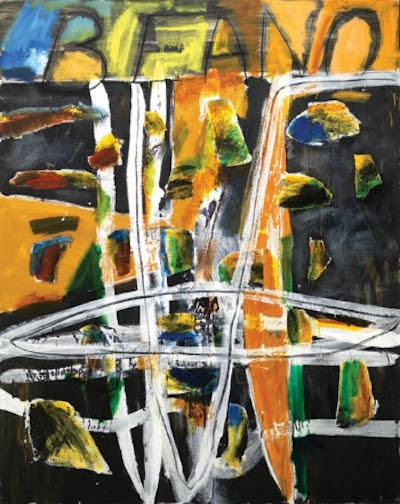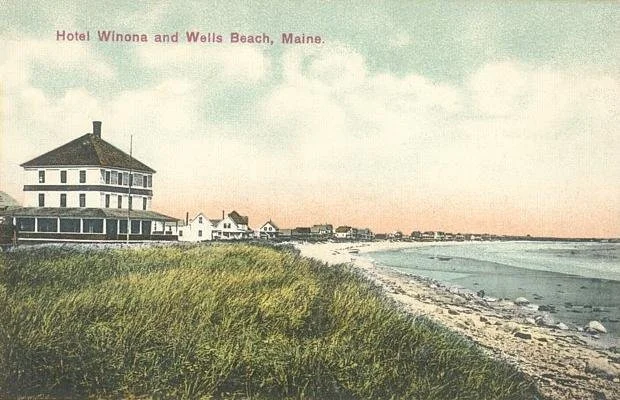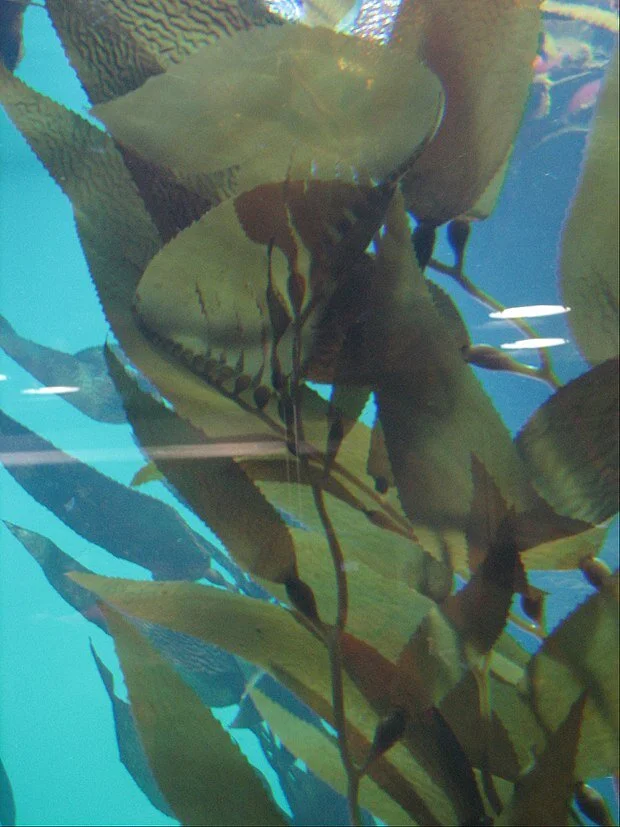
‘Babbling and strewing flowers’
—Photo by Victor Estrada Diaz
To what purpose, April, do you return again?
Beauty is not enough.
You can no longer quiet me with the redness
Of little leaves opening stickily.
I know what I know.
The sun is hot on my neck as I observe
The spikes of the crocus.
The smell of the earth is good.
It is apparent that there is no death.
But what does that signify?
Not only underground are the brains of men
Eaten by maggots.
Life in itself
Is nothing,
An empty cup, a flight of uncarpeted stairs.
It is not enough that yearly, down this hill,
April
Comes like an idiot, babbling and strewing flowers.”
— “Spring,’’ by Edna St. Vincent Millay (1892-1950), American poet. She grew up on the Maine Coast. This poem refers indirectly to the carnage of World War I.
Inspiration from travel
“Waterlilies” (encaustic, color pigments), by Jeanne M. Griffin, who is based in Wells, Maine.
Part of her artist statement:
“Travel plays a large role in my life and, over the years, I have visited close to 100 countries. I am particularly drawn to countries of the Third World and love seeking out and visiting with local artists. I have always been fascinated with their weavings and paintings and the textures and patterns they create using various tools and materials….”
“My travels expose me to many ideas and thoughts which percolate in my head and eventually find their way into my work. {For example} I have incorporated printing with Indonesian tjaps (more commonly used in batik printing) combined with encaustic medium and color pigments to produce each one-of-a-kind painting. This is one way of keeping my wonderful memories of these beautiful countries and interesting people alive.’’
Wells has long been a popular summer resort, as you can see in this 1908 postcard. Founded in 1643, it is the third-oldest town in Maine.
Tidal salt marsh at the Rachel Carson (1907-1964) National Wildlife Refuge, in Wells, named after the prolific writer, marine biologist and conservationist best know for the books Silent Spring and The Sea Around Us. She spent summers on the Maine Coast.
‘What Maine was really like’
‘‘There were no curtains. Light saturated the immaculate rooms. In the kitchen was a wood-burning stove, an iron sink, gray-white walls, a basket of new peas. In lieu of electric lights, glass oil lamps were lined up, waiting for evening. ‘It looked like what Maine was really like, just as they found it,’ Wyeth remembers.’’
— Richard Meryman, on painter Andrew Wyeth’s (1917-2009) first visit to Maine, in 1939, in Andrew Wyeth: A Secret Life (1996)
“Christina’s World’’ (tempera), set in Maine’s Midcoast and probably Wyeth’s most famous painting. He divided his time between his summer place in Cushing, on the Maine Coast, and Chadds Ford, in southeastern Pennsylvania. Below is the house portrayed in the painting.
A new crop
Giant kelp before harvesting
From Robert Whitcomb’s “Digital Diary,’’ in GoLocal24.com
We New Englanders think more about lobsters as we head into summer. But they’re disappearing from much of the southern New England coast, apparently mostly because of warming waters. Waters are warming in the lobster heartland of the Maine Coast, too, but not too much yet to slash harvests. At the same time, key finfish species are declining. So to find other ways of continuing to work on that storied coast, some former and current lobstermen and other fishermen are getting into oyster and other shellfish aquaculture, and now kelp, which is sold as a very healthy food.
The kelp farms have another attribute:
Our fossil-fuel burning is loading carbon dioxide into the atmosphere, much of which of it then goes into the oceans, where it makes the water more acidic. Among other damage, this harms the development of the shells of oysters, and hurts lobsters, too. But kelp farms reduce the acidity of the water around them, creating sites not only better for shellfish but also for other creatures.
Round and round
 "Back and Forth'' (oil on canvas), by JOHN WALKER, in the show "John Walker: New Works,'' at the Addison Galleries, Boston Nov. 7-21.
"Back and Forth'' (oil on canvas), by JOHN WALKER, in the show "John Walker: New Works,'' at the Addison Galleries, Boston Nov. 7-21.
"Not since John Marin burst upon the American art scene in the 1920s and 30s have paintings of Maine succeeded to a comparable degree in setting a new standard for pictorial innovation in the art world at large."
-- Hilton Kramer, "Painter John Walker Evokes Maine Coast," New York Observer, Aug. 9, 2004.
xxx
Whoever wins the election on Tuesday, it can be said without reservation that the public, in all its confused glory, will, as of January, blame the newly elected officials for doing exactly what the public complained that the tossed-out officials were doing.







